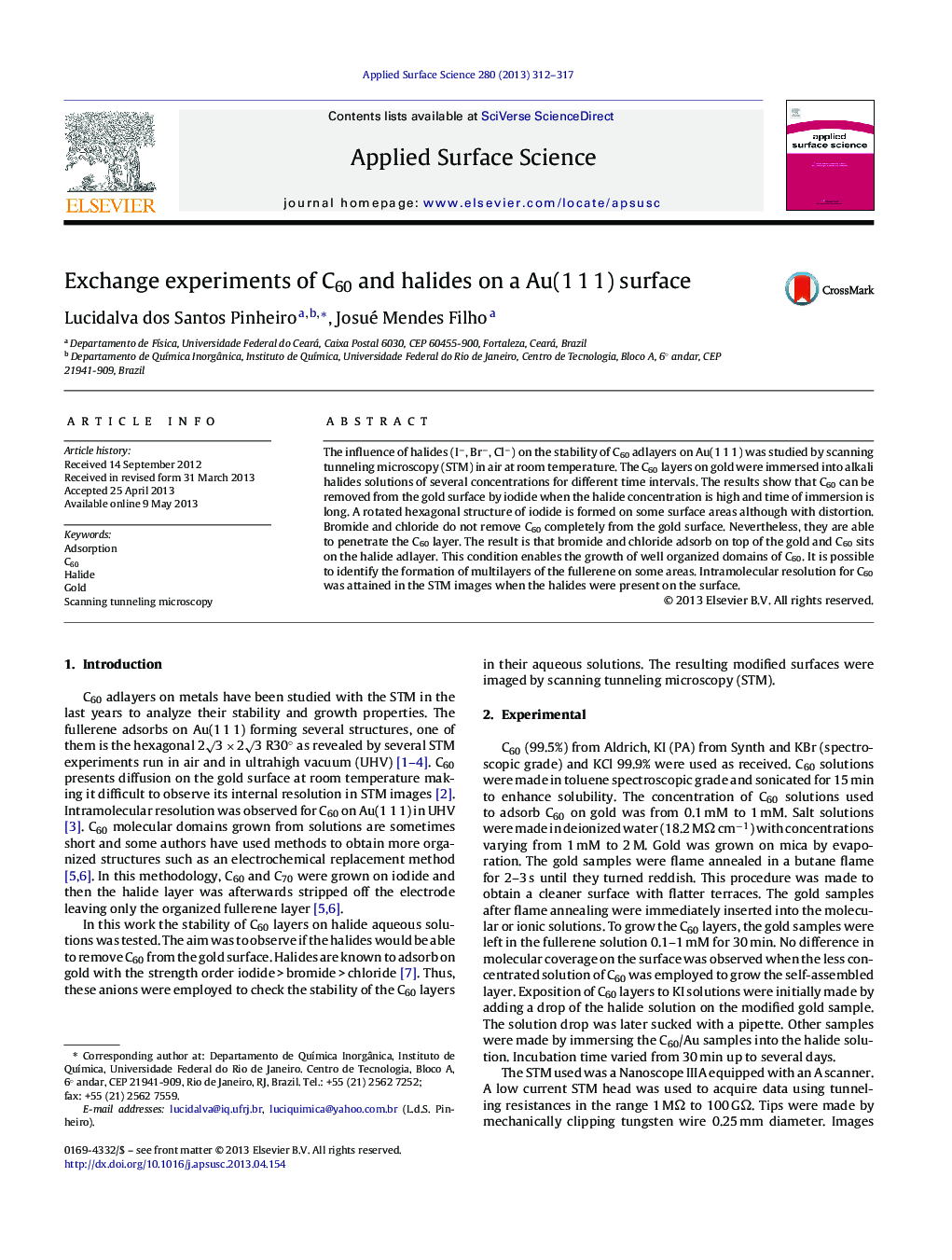| Article ID | Journal | Published Year | Pages | File Type |
|---|---|---|---|---|
| 5353001 | Applied Surface Science | 2013 | 6 Pages |
Abstract
The influence of halides (Iâ, Brâ, Clâ) on the stability of C60 adlayers on Au(1Â 1Â 1) was studied by scanning tunneling microscopy (STM) in air at room temperature. The C60 layers on gold were immersed into alkali halides solutions of several concentrations for different time intervals. The results show that C60 can be removed from the gold surface by iodide when the halide concentration is high and time of immersion is long. A rotated hexagonal structure of iodide is formed on some surface areas although with distortion. Bromide and chloride do not remove C60 completely from the gold surface. Nevertheless, they are able to penetrate the C60 layer. The result is that bromide and chloride adsorb on top of the gold and C60 sits on the halide adlayer. This condition enables the growth of well organized domains of C60. It is possible to identify the formation of multilayers of the fullerene on some areas. Intramolecular resolution for C60 was attained in the STM images when the halides were present on the surface.
Related Topics
Physical Sciences and Engineering
Chemistry
Physical and Theoretical Chemistry
Authors
Lucidalva dos Santos Pinheiro, Josué Mendes Filho,
